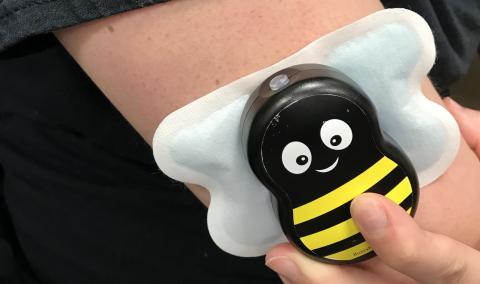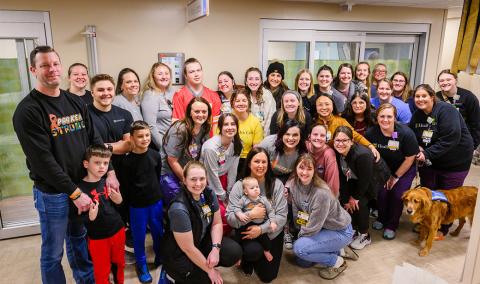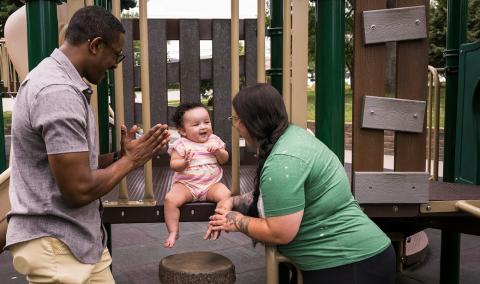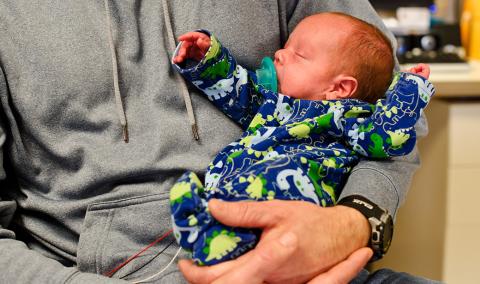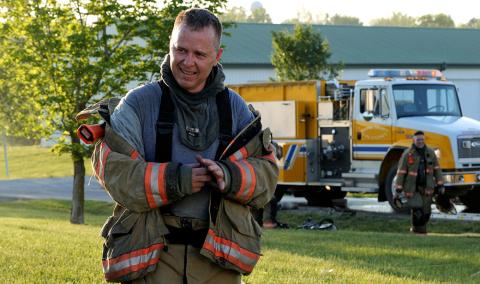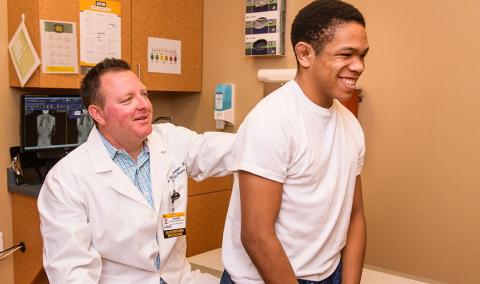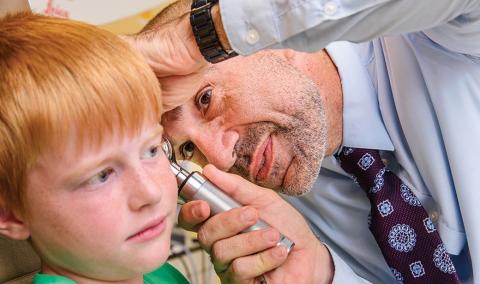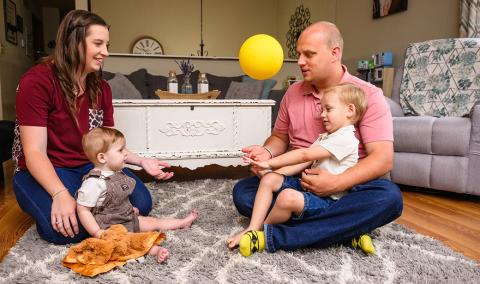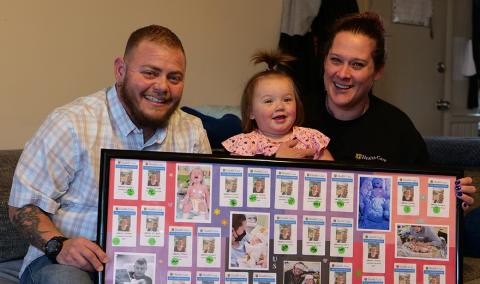Undescended testicle is a common condition that occurs in approximately 4 out of every 100 male babies. It is defined as when one or both testicles does not drop into the scrotum by the time of birth.
An undescended testicle will commonly drop into the scrotum on its own by 9 months of age. If it does not, MU Health Care’s pediatric urology team recommends that your child undergoes surgery before his first birthday to correct the condition and minimize its damage.
An undescended testicle is less likely to produce sperm and more likely to develop testicular cancer over time.
Undescended testicle surgery: What to expect
The type of surgery we perform depends on the location of your child’s undescended testicle.
If he has a palpable testicle — meaning it can be felt in the groin — it will be brought down through a small incision near the groin and stitched into place.
If your child has a non-palpable testicle — meaning it cannot be felt in the groin — he will undergo laparoscopic surgery. A camera will be placed through an incision in his belly button and tools the size of drinking straws will be placed through two small incisions in his abdomen. The surgeon will locate his testicle and bring it down to the scrotum. Sometimes, non-palpable testicles require two separate procedures.
These surgeries have high success rates. Ninety-five percent of palpable testicles and 75 percent of non-palpable testicles function normally once they are repaired.
In rare cases, we learn that there is no testicle in the child’s groin or abdomen. This can occur for a variety of reasons. Please note that only one fully-functioning testicle is needed in order to achieve a normal testosterone level and fertility.
Related Conditions & Treatments
- Adolescent Medicine
- Pediatric Chest Wall Disorders Program
- Down Syndrome
- Emergency Care for Kids
- Feeding Tubes for Children
- Hyperbaric Oxygen Therapy
- Juvenile Diabetes
- Neonatology
- Pediatric Anesthesiology
- Pediatric Cancer
- Pectus Carinatum
- Pectus Excavatum
- Pediatric Cardiology
- Pediatric Dermatology
- Pediatric Development and Behavior
- Pediatric ENT (Ear, Nose and Throat)
- Pediatric Epilepsy
- Pediatric Eye Care
- Pediatric Gastroenterology
- Pediatric Infectious Diseases
- Pediatric Inpatient Rehabilitation
- Pediatric Nephrology
- Pediatric Neurology
- Pediatric Neurosurgery
- Pediatric Orthopaedics
- Pediatric Plastic Surgery
- Pediatric Primary Care
- Pediatric Psychiatry
- Pediatric Pulmonary Medicine
- Pediatric Sleep Medicine
- Pediatric Surgery Services
- Pediatric Surgical Services
- Pediatric Urology
- Pediatric Vascular Anomalies
- Pediatric Weight Management
- Sickle Cell Disease
- Aerodigestive Program



